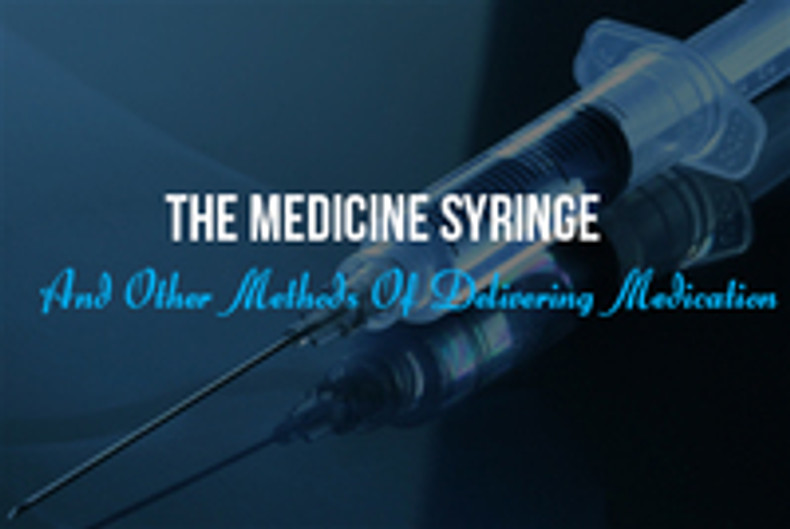
Exploring Medicine Syringes and Other Medication Delivery Techniques
Syringes come in a wide range of sizes, shapes, and measurements. It all depends on the dimensions. To use one, you have to either be experienced or simply follow the directions. Your doctor is an excellent source of information, but you can find out more from websites dedicated to the subject.
Various Sizes
Syringe sizes are important to people who use it to inject fluid into their bodies. Some of these individuals include diabetics or those show suffer from serious allergies. While syringes are typically used to inject medications, they can also be used to remove fluids from the body. Doctors often use these tools to draw blood for further evaluation, using syringes in various sizes depending on the patient’s needs.
The syringe sizes are based on the amount of fluid the barrel can hold. The fluid, medicine or liquid is stored in the barrel until the injection is administered. The volume measurement of the liquid is typically in milliliters. This allows for a more precise measurement. In most cases, the barrel ranges in size from 0.5 to 50 ml.
Dose and Size
 Syringes and needles used to administer insulin are also made in different sizes. The insulin dosage determines which of the syringe sizes individuals need to administer the medicine. For example, if you want to inject 30 units, you would use three 10 cc units, which amounts to a total of 30 units. If you are injecting 31 to 50 units, you would use the 0.5 cc syringe for administering 50 units. If the dose is 51 units, you would use a 1 cc syringe, which administers 100 units. The size of the needle also varies by individual syringe size. We carry a variety of syringe sizes at low bulk pricing, giving you access to the tools you need to stay healthy.
Syringes and needles used to administer insulin are also made in different sizes. The insulin dosage determines which of the syringe sizes individuals need to administer the medicine. For example, if you want to inject 30 units, you would use three 10 cc units, which amounts to a total of 30 units. If you are injecting 31 to 50 units, you would use the 0.5 cc syringe for administering 50 units. If the dose is 51 units, you would use a 1 cc syringe, which administers 100 units. The size of the needle also varies by individual syringe size. We carry a variety of syringe sizes at low bulk pricing, giving you access to the tools you need to stay healthy.
It is ideal to buy in bulk because most of these syringes are disposable and cannot be reused due to health reasons and hygiene. Always store your needles and syringes in an approved sharps container for proper disposal.
Various Parts
Apart from understanding that medical syringes come in a variety of dimensions, it is also essential to learn about their parts. The typical syringe consists of several parts: the plunger, barrel, hub, needle and protective cap. You will find the plunger in the lower region of the syringe. It is manufactured using plastic or glass. The plunger fits inside the barrel and moves up and down to fill or empty the barrel.
The hub holds the needle adapter and keeps the needle intact. For safety, it locks the needle in place while the syringe is used. The needle also has comes in different sizes, depending on its use. Finally, the protective cap keeps the needle free of contamination.
If you want to know which of our syringe sizes is right for you, browse our variety of syringe options.
A medicine syringe is a popular way to guarantee that patients are receiving the correct dosage or a needed medication in a timely manner, but there are other ways medicines can be administered, as well.
Also called routes of administration, there are several different routes to deliver medicine.
- Oral: While these are often the most convenient medicines to administer, they also carry a greater risk of allergic reactions away from a care provider’s oversight, and may not resolve a medical situation as quickly as other methods.
- Topical: These medications are rubbed directly into the skin site, and may cause fewer overall side effects. Unfortunately, though, it’s hard to guarantee that the correct dosage has been used, and there may be some resulting skin irritation.
- Inhalation: This route is typically absorbed quickly, and is one of the preferred methods to deliver medications to the brain. However, if the patient is using an improper technique, the correct dosage may not be administered.
- Sublingual: Some medications are placed under the tongue to dissolve. These are not necessarily convenient, and could take a longer time than expected to go into effect.
Injection: Using a syringe and needle for intravenous, intramuscular or subcutaneous medication administration is one of the fastest ways to get the medicine in the body. A variety of needle sizes and types make it easier to avoid pain or discomfort, and a clear measuring system allows for more accurate dosing.

